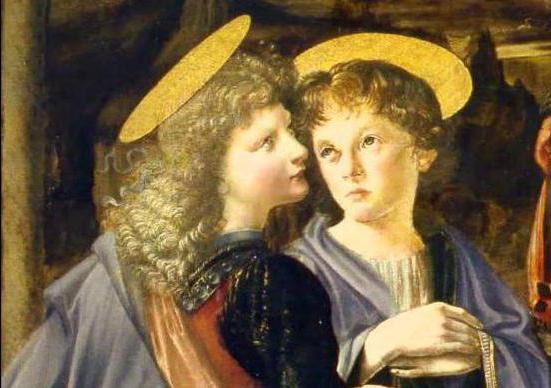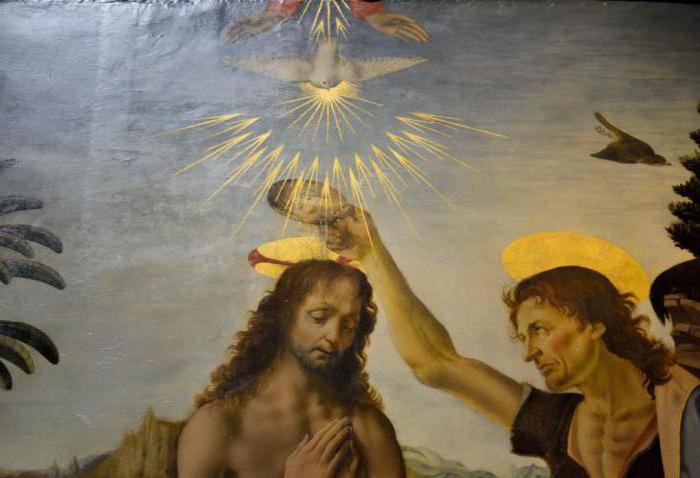Leonardo da Vinci is a universal genius, the flagship of Renaissance art and science. And therefore, his paintings can often be considered not only as unique works of art, but also as a result of serious scientific observations and conclusions.
Leonardo da Vinci - the genius of the era
All his scientific conclusions and discoveries were embodied in drawings, sketches, layouts, many of which can be equated with works of art, as well as works of art - painting, drawing, sculpture, etc. - are the focus of his scientific thought. Many of them, which once seemed fantastic, are now perceived as prophecies. His discoveries were ahead of his time. Therefore, many were not embodied then in reality. It is in relation to the work of da Vinci that the phrase is completely applicable: "There is no limit to perfection." And it’s not at all because the followers can do what he’s conceived and created better, but because the master himself always strived for the ideal embodiment of the plan, that this ideal was moved further and further, and in the end Leonardo did not finish his work, as he could not achieve desired ideal.
History of the painting
The painting "The Baptism of Christ" for Leonardo da Vinci was the last joint creative project with his teacher Andrea del Verocchio. At that time, Leonardo had already finished his studies in the studio of a famous painter and began an independent path in art. By the time the work was created, he was about 20 years old.
Actually the figure of Jesus Christ and the image of John the Baptist belong to the brush of Verrocchio, and the kneeling angel and the surrounding landscape were created by the young Leonardo. There is a story told by Giorgio Vasari that the images created by da Vinci were so much more beautiful than those written by his teacher that Verocchio completely stopped creating from that moment. However, this information is not supported by facts.
It was from the painting "The Baptism of Christ" that his amazing style, called painfully tender, began to appear in the works of Leonardo da Vinci.
Now Leonardo da Vinci's painting "The Baptism of Christ" is exhibited in the collection of Italy, in the Uffizi Gallery in Florence.
The plot of the work
The plot of the painting "Baptism of Christ", or Epiphany - one of the most popular in world painting of different historical eras and styles. He did not pass by the works of the titan of the Renaissance Leonardo da Vinci.
According to biblical texts, at the time when the prophet John the Baptist performed sacred ablutions of people on the banks of the Jordan River in Jerusalem, preparing them for the coming coming of the Messiah, Jesus Christ was nearby. He once appeared on the shore of the Jordan and turned to John with a request to baptize him. Surprised John: "I am not you, but you must baptize me." However, he baptized Jesus and began to be nicknamed the Baptist from that time on.
Description of the painting Leonardo da Vinci "The Baptism of Christ"
In the painting "The Baptism of Christ" by Andrea del Verocchio and Leonardo da Vinci in the center of the canvas in the foreground is Jesus Christ. To the left of Jesus (to the right of the viewer) is John the Baptist. In his left hand he holds a staff with a cross-shaped top, and in his right - a cup with myrtle, with which he baptizes the Son of God. On the right are two kneeling young angels - witnesses of the sacrament lead an unhurried conversation.

The quiet and solemn nature surrounding them is consonant with the significance of what is happening. The Jordan quietly rolls its waters past in the background, as if contemplating and encouraging what is happening. In heaven, we see two palms open towards the viewer, from which a white dove ejects. The palms symbolize God the Father, the dove symbolizes God the Holy Spirit. On the one hand, these are symbols of God's blessing of the sacrament taking place, and on the other hand, they are the designation of the trinity of the Divine essence, Omnipresent and All-Seeing, Omnipresent. In favor of the former, a quote from the Gospel of Mark says: “And when he came out of the water, John immediately saw the heavens and the Spirit open, like a dove descending on Him. And the voice was from heaven: You are My beloved Son, in whom I am well pleased.”

The landscape in the painting, according to some art historians, resembles the view of Monsummano - a place located near Leonardo's homeland - the village of Vinci - one of those corners dear to the heart that da Vinci depicted in his canvases.
Symbolism of color in the picture
If we turn to the color scheme of the painting "The Baptism of Christ" by Leonardo da Vinci, then we can distinguish the predominance of blue-blue and white shades. And this is not accidental, because from the point of view of their cult significance, blue-blue tones represent the infinity of heaven, another eternal world, the union of the earthly and heavenly, and the white color represents Divine light, purity and holiness. It is these colors that the authors used to create the images of angels and John the Baptist, however, John has a black shirt on his body, which means death. And this is no accident - the ministry of John the Baptist to the Lord led him eventually to a tragic death. And the red color of the sleeves of God the Father and the loincloth of Jesus Christ means the victory of life over death and love for one's neighbor and for all people. Black stripes on his clothes remind of the coming demise of Jesus. Golden stripes, halo and radiance, coming from the hands and dove, personify the radiance, coming from God, a symbol of His blessing.
The masterpiece of Leonardo da Vinci and Andrea Verocchio invariably arouses admiration among the contemplators. However, in books and other information sources there are practically no reviews of our contemporaries about the work. The question arises: "Why in the blogs and on the tourist pages in VK, among the works under discussion, there is no detailed description of the painting and reviews of Leonardo da Vinci's Baptism of Christ?"